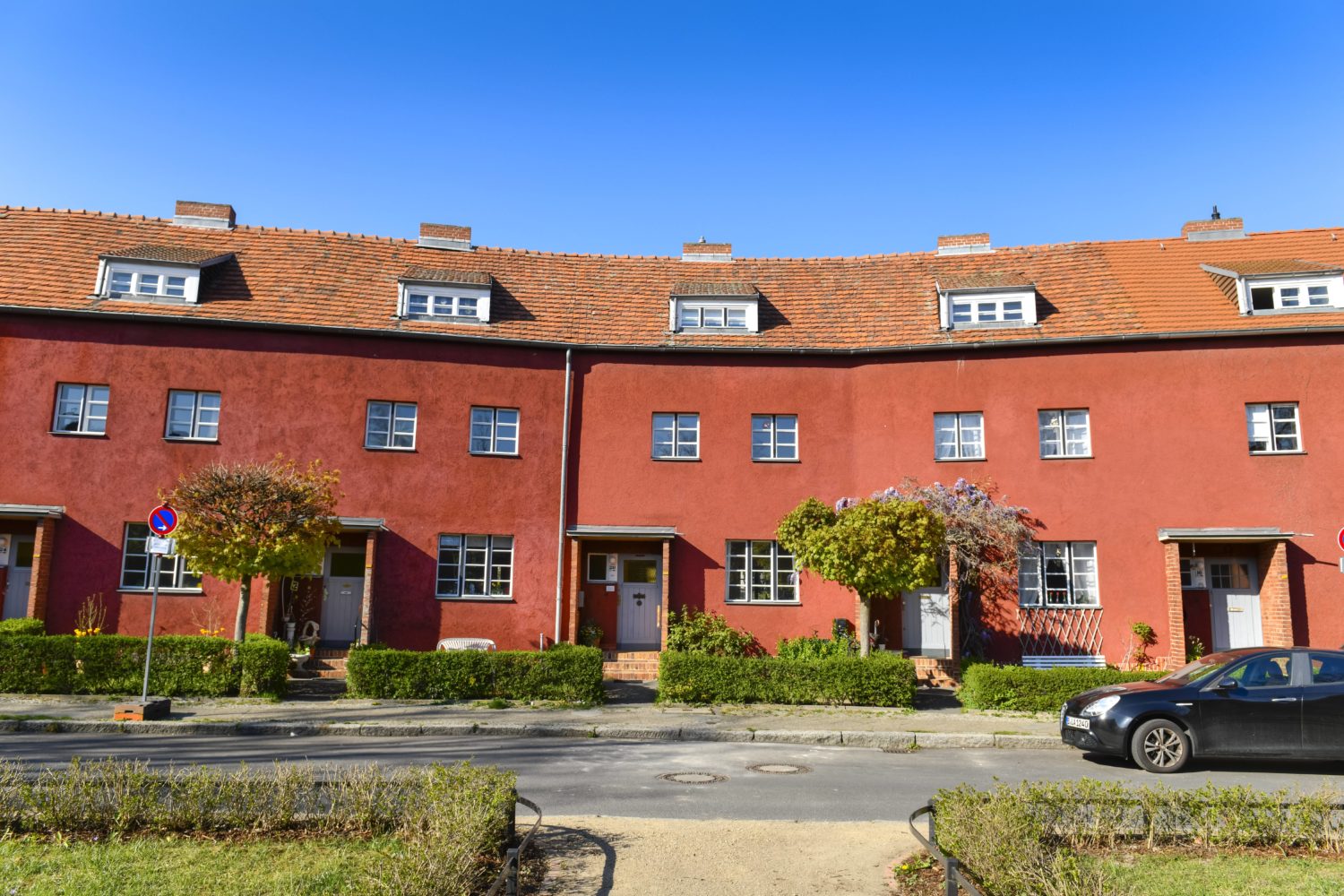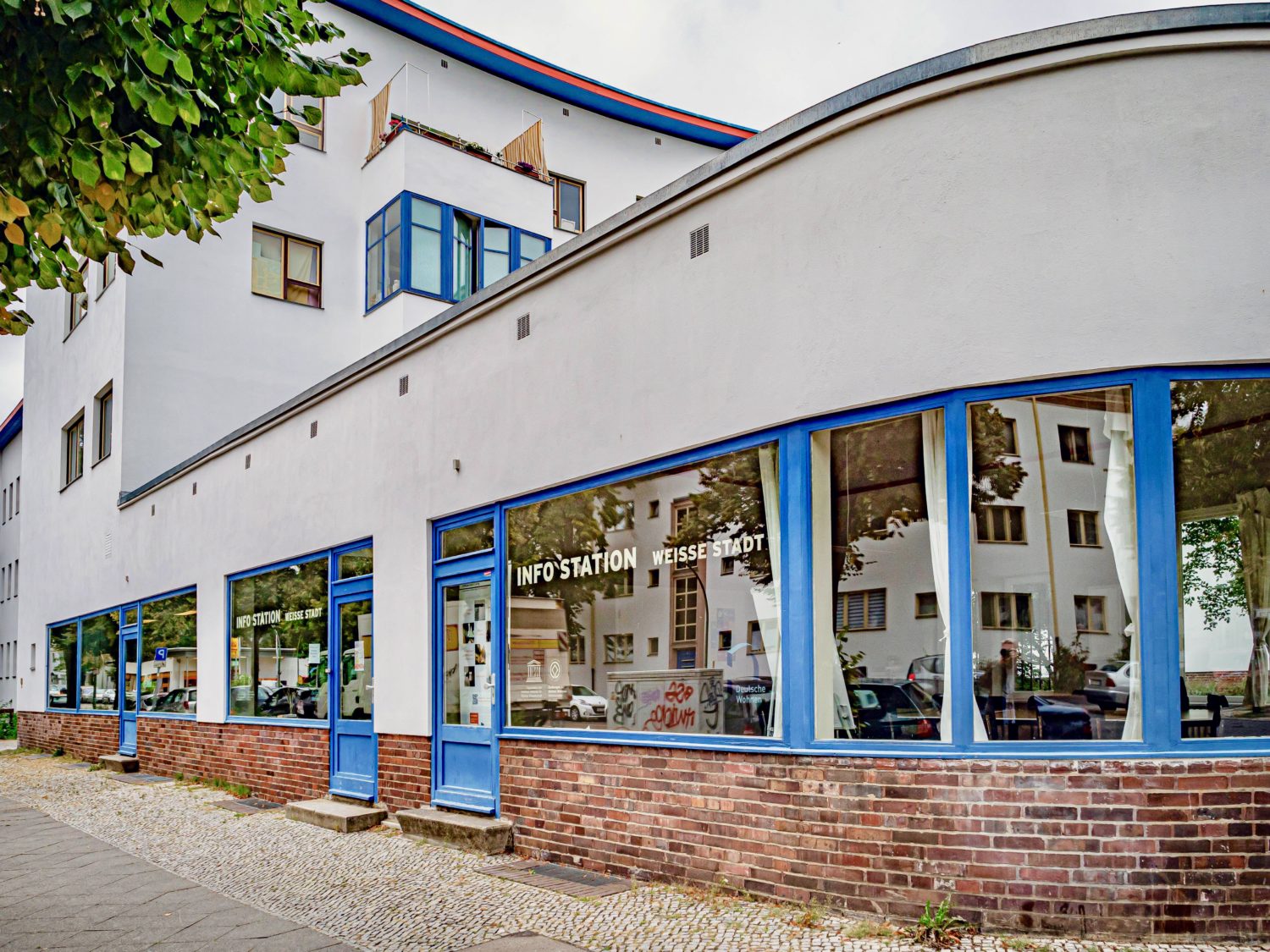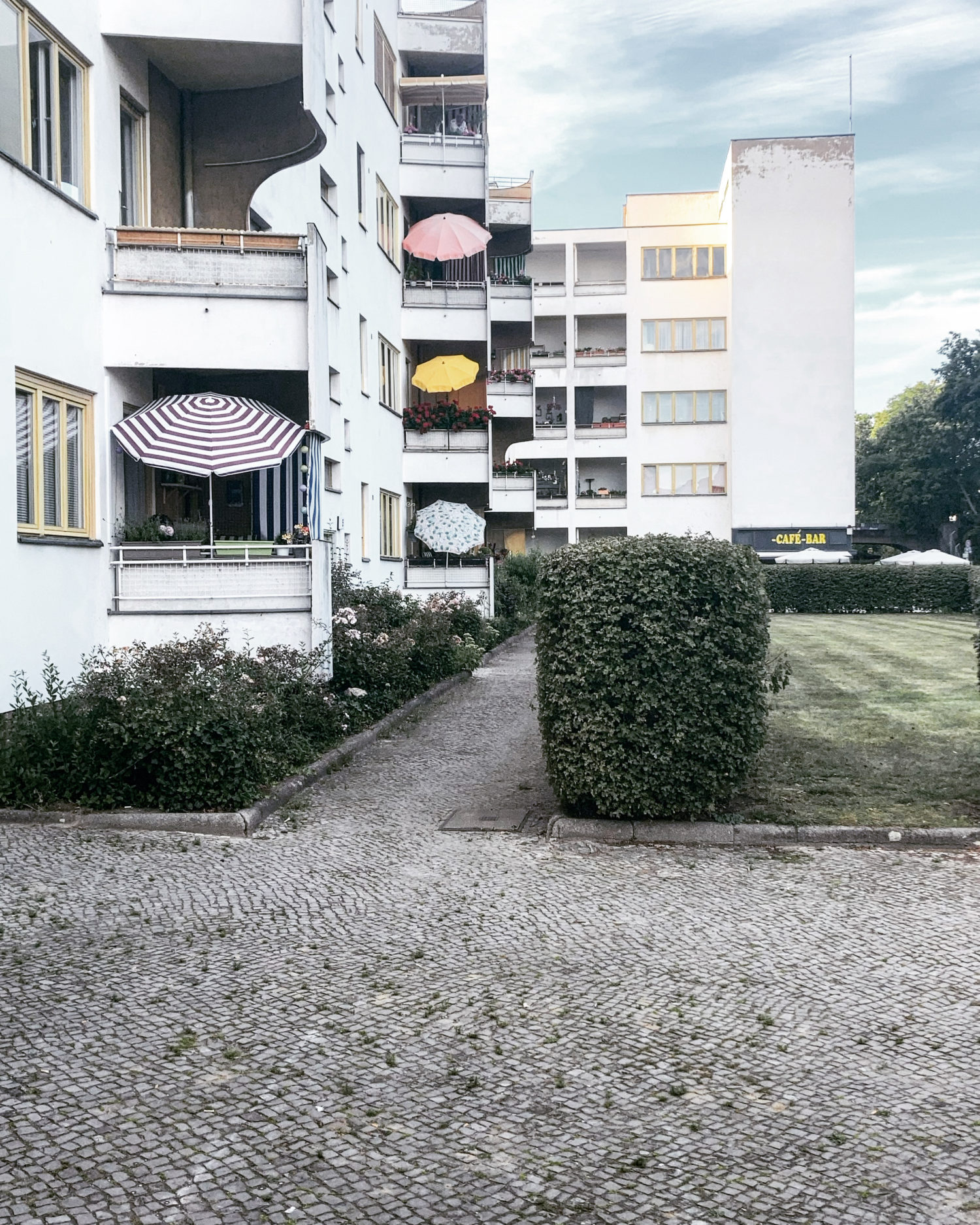Architecture fan Paul Sullivan explores modernism in Berlin on a tour of the city’s UNESCO-listed housing estates…

Back in 2008, six of Berlin’s modernist housing estates were listed as UNESCO World Heritage Sites. Dotted mainly around the fringes of the inner city, each was built during the Weimar period as a reaction to the city’s predominant tenement buildings (Mietskasernen), which by the end of the 19th century had become largely overcrowded and unhygienic.
By the beginning of the 20th century, it was a matter of increasing urgency to create housing for workers that offered more light, better sanitation (the tenements often shared rudimentary bathrooms) and more green space; indeed, the Weimar constitution (1919) contained a law guaranteeing decent homes for all Germans. The new settlements drew on the modernist styles popular at the time: Neue Sachlichkeit (New Objectivity) in Germany, De Stijl in the Netherlands, and the English Garden City movement.
Berlin wasn’t the only city to embrace these new ideals, but it quickly become a hotbed for ideas and experimentation, thanks largely to progressive city mayor Gustav Böss and city planner Martin Wagner, who commissioned modernist architects such as Bruno Taut (who was involved in four of the six estates), Hans Scharoun, Walter Gropius, Otto Rudolf Salvisberg and Hugo Häring. Wagner also created the GEHAG building society, which constructed around seventy percent of the city’s buildings during the interwar years with Taut as chief architect.
Although the estates have formalist and minimalist styles in common, and mostly favour bold colours over rich ornamentation—for budget as well as aesthetic reasons—it’s striking how much the six estates differ from each another, boasting their own distinctive characters.
Modernism in Berlin: Colourful cottages at Gartenstadt Falkenberg

The first, between 1913-15 by Taut and landscape gardener Ludwig Lesser, was the Gartenstadt Falkenberg in Grünau, which was most clearly influenced by the English Garden City. The 128 houses here are bundled together to form a small, cutesy village-like enclave.
Interconnected with small grassy pathways and painted in a splendorous array of colours and eye-catching patterns, the estate earned the nickname—Tuschkastensiedlung or ‘paint-box estate’. Each home has a dedicated (and beautifully maintained) garden, as well as kitchen and bathroom; luxuries for workers at the time.
The famous ‘Horseshoe Estate’ in Britz
The commissioning of the estates was cut short by the First World War (as was the intended larger expansion of Gartenstadt Falkenberg), but in the twenties Taut returned with the Großsiedlung Britz Hufeisensiedlung in Neukölln, built between 1925-31 with landscaping by Leberecht Migge.
The name of the estate comes from the distinctive horseshoe-shaped pond at its centre, surrounded by a spacious meadow and corresponding sweep of low-rises (25 in total). Encircling this central hub, several radial streets shoot out like spokes from a wheel, each one lined with blocks of red-roofed terraced houses and gardens.

The overall aesthetic is very different from Grünau, but more in line with the estates that followed in the 1920s, particularly in terms of the scale (most consisted of between 1000-2000 homes) and the innovative floor plans, which included living rooms, bedrooms, bathroom and kitchen, plus an in-house community area with café and laundry facilities. The downside was that costs rose to the point where the homes were unaffordable for the workers they were intended for, leading to a more middle-class residential mix.
Utilitarian charm: Schillerpark-Siedlung and Weiße Stadt
Wedding’s Schillerpark-Siedlung and Reinickendorf’s Weiße Stadt, which lie just a couple of kilometers from each other, are different again. The 303 buildings that comprise the former were constructed between 1924 and 1930 by Taut and Franz Hoffmann, and lie next to the eponymous Schillerpark. Built from handsome red brick, these homes encircle courtyards and sport flat roofs and balcony-like loggias.
Though influenced by the Amsterdam School, the street names are, confusingly enough, British and form part of the area’s Englischer Viertel. Behind the main estate you’ll find a series of contrastively glass-heavy buildings, added between 1954-59 by Hans Hoffmann; their conservatories are prettily adorned with colourful umbrellas and foliage.

The striking Weiße Stadt, built between 1929-31 by Bruno Ahrends, Wilhelm Büning and Otto Rudolf Salvisberg, gets its name from the buildings being coated in white plaster. There are subtle splashes of colour on the doors, window frames and roofs, as well as collective-use green spaces by Ludwig Lesser, who worked on the Falkenberg Gartenstadt.
Residents here also got a nursery, doctor’s practice and more than twenty shops. It’s arguably one of the chicest of the settlements thanks to its clean lines and unapologetic minimalism.
Carl Legien Housing Estate: Bruno Taut’s last major project

Prenzlauer Berg’s Carl Legien Estate (1928-30), named after the German trade union leader and Social Democrat, was Bruno Taut’s last major project and built in collaboration with Franz Hillinger. It’s also an attractive, albeit high-density project, with over 1000 apartments in a relatively small area around Erich-Weinert-Straße. The homes here are smaller, intended for single people or couples with just one child, rather than larger families.
The blocks are set in a U-shaped design around open courtyards and are charming and visually coherent, with doors and window frames painted in striking reds and yellows, and attractive corner balconies that get direct sunlight almost all day long. Kitchens and bathrooms are located towards the street, with bedrooms and living rooms strategically facing the green spaces within the courtyards.
A medley of modernism: The Siemensstadt Settlement

Siemensstadt Settlement (Großsiedlung Siemensstadt), built in roughly the same period (1929-31), is way less coherent (and much shabbier, sadly), having been created by the all-star cast of Otto Bartning, Fred Forbat, Walter Gropius, Hugo Häring, Paul Rudolf Henning and Hans Scharoun, who each sought to put their own spin on the estate’s 1,379 apartments.
Built to provide housing for low-income Siemens workers, it’s designed in the ribbon construction style, with narrow houses set in a north-south direction at right angles to roads. The medley of styles includes Scharoun’s maritime-influenced buildings on Jungfernheideweg, Gropius’s cool, functionalist “Panzerkreuzer”, and Häring’s warmer brown and ochre blocks, with their organically-shaped balconies.
The estates provide a fascinating insight into a short window of time when Berlin’s architects were conceptually progressive as well as socially utopian. It’s hard to not wish for a similar era to return today, when Berlin once again needs more socially-minded housing.
You can find more information on the estates here.
Paul Sullivan is a guidebook author, travel journalist and the founder/editor of Slow Travel Berlin. His words and images have appeared in The Guardian, BBC, Sunday Times Travel, The Telegraph, Nat Geo UK and more. He has lived in Berlin for 12 years.
Berlin isn’t just famous for its modernism — the city has also become the world’s clubbing mecca and the spiritual home of the late, great David Bowie.



